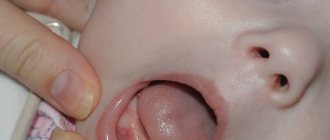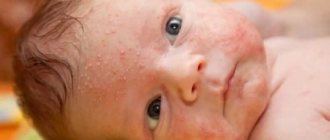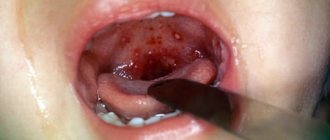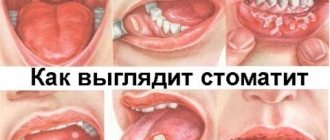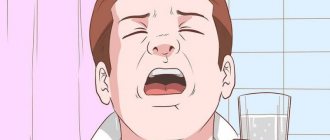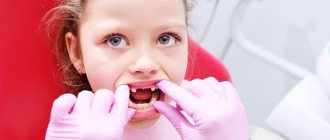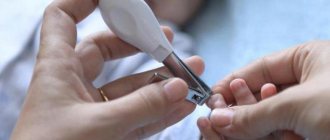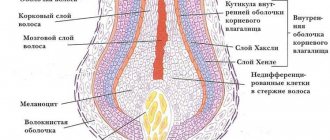Rosacea is a skin condition characterized by chronic inflammatory processes. Most often, the lesion is localized in the face area.
If this disease is left untreated, it will eventually develop into a more severe form.
Rosacea is more likely to develop in people with fair skin who have ancestors who lived in Northern Europe.
However, the prevalence of this condition is not limited to a certain area.
In the United States of America, for example, there are up to 14 million patients diagnosed with rosacea.
Moreover, this figure may be seriously underestimated, since this disorder is often “masked” as acne, eczema or manifestations of an allergic reaction. Below we will look at the symptoms and treatment of this problem.
Reasons for development
Experts are not yet able to clearly indicate the causes of rosacea. The following factors are believed to be associated with the development of this condition:
- Anomalies in the functioning of the bloodstream of the face. Dermatologists tend to believe that such abnormalities provoke erythema, persistent redness and “visualization” of the vascular network. What exactly triggers inflammatory processes in blood vessels remains a mystery.
- Bright skin. People with white skin make up the majority of patients diagnosed with rosacea.
- Demodex is a microscopic mite that lives on human skin. As a rule, its presence does not cause any problems. However, in patients affected by rosacea, the number of these mites is noticeably higher than in other people. Experts are not yet able to determine whether the development of rosacea is triggered by an abnormal population of mites or whether the progression of the disease somehow triggers their reproduction.
- Helicobacter bacterium. Colonies of Helicobacter pylori bacteria that live in the gastrointestinal tract stimulate the production of bradykinin. In turn, this protein is responsible for dilating blood vessels. It is possible that the development of rosacea may also be of a bacterial nature.
- Hereditary predisposition. The family history of many patients includes close relatives affected by the same disease.
Why do growths appear?
It manifests itself in adolescence, during puberty. Then pointed pink papules appear along the rim of the head, as well as on the frenulum. There's nothing wrong with them.
Pathologically, a growth appears on the frenulum of the penis:
- for infectious diseases (including sexually transmitted diseases);
- in case of genetic failure;
- due to failure to comply with basic hygiene.
Sexually transmitted diseases manifest themselves in the form of warts , accompanied by irritating itching, burning and inflammation of the head of the penis.
During puberty, hormonal disruption is possible, and then foreign growths form on the penis. To find out how harmless they are, you should contact a specialist.
From time immemorial, men have not been famous for their cleanliness. Dirty hands can cause acne on the frenulum and on the penis itself.
themselves differ in their shape and size . It can be:
- Papillomas . Small round neoplasms reaching 10 millimeters in diameter. Outwardly, they resemble small mushrooms: brown or flesh-colored, on an elongated stalk.
- Condylomas . Growths with a sharp end. They are half the size of papillomas and look like broccoli. Elongated leg, uneven cap. They appear and multiply very quickly.
- Warts . They have clear contours and an uneven surface. May have different colors, sizes and shapes.
Typically, all three types of neoplasms at the initial stage do not cause discomfort. If left untreated, they can “move” first to the head of the penis, then to the entire organ.
Triggers of rosacea.
Some factors can intensify the symptoms of rosacea or lead to the development of a more severe stage of the disease. All of these factors are due to the fact that they stimulate blood flow to the skin:
- Hot dishes;
- Hot drinks;
- Caffeine;
- Milk products;
- Spices;
- Sunlight;
- High humidity;
- Strong wind;
- Stress, anxiety, anger;
- Intense exercise;
- Taking hot baths;
- Saunas, baths;
- Taking corticosteroids;
- A number of medications used for high blood pressure;
- The intense phase of certain conditions, such as a cold, cough or fever;
- Certain chronic diseases, such as hypertension (high blood pressure);
- Alcohol. Alcohol intake itself is not the cause of rosacea, but for some people it becomes a trigger for the pathology.
Treatment Strategies
There is no medicine that can cure rosacea. However, there are a number of techniques and drugs that can alleviate the symptoms of the disease. The best strategy for treating rosacea is an individualized combination of medications and comprehensive lifestyle modifications.
In addition, a dermatologist may prescribe creams that will help cover up spots on the skin.
Medications
The treatment protocol may combine prescription medications applied topically to the skin and taken orally (pills, tablets, and capsules for internal use). Such medications include:
- Medicines for external use (ointments) - help relieve inflammation and reduce redness. Apply to the skin once or twice a day. As a rule, their use is combined with oral administration of certain drugs. We recommend Skinoren.
Non-drug treatments
In the practice of getting rid of rosacea, various types of special technical interventions are widely used. A specialist is able to advise how to treat rosacea in a particular case of the disease.
Laser therapy
This technique, using intense pulsed radiation, is applicable to correct the visible network of blood vessels (telangiectasia). Although the procedure is not painless, most patients are able to tolerate it without anesthesia.
Laser treatment is sometimes accompanied by bruising, swelling, and pain. Infectious processes rarely develop. Such complications usually resolve within a few weeks, although treatment with antibiotics may be required if infection occurs.
Plastic surgery
In some cases, surgical intervention is used to correct skin thickening and accompanying deformities (rhinophyma).
If the patient experiences an onion-like growth of the nose, thickening of the cheeks, and the appearance of bulges on the lower part of the nose and adjacent areas of the cheeks, plastic surgery is recommended.
Both laser and traditional surgery can be used to remove excess tissue and reshape the nose.
Prevention
To avoid problems in the future, it is recommended to follow preventive measures :
- Do not have sexual relations with dubious partners. For example, the HPV virus is highly transmitted through sexual contact and no condoms can interfere with it.
- Carefully observe the rules of personal hygiene. Ideally, have a men's intimate gel at home.
- Do not wear tight or synthetic underwear.
- Keep the reproductive organ warm.
- Do not use other people's towels and personal hygiene items.
If the disease does occur, there is no need to be shy; it is better to immediately contact a specialist .
In addition, it is important for both sexual partners to undergo treatment. The consequences of sexually transmitted diseases can be very serious.
- drops Thor's Hammer - is it a scam?
- where can I get Peruvian maca?
- another way to use Lovelace Forte;
- Why can’t you buy the sensational M-16 spray at the pharmacy?
- Is it true that training using the Kegel technique helps strengthen your erection?
When folk and pharmacy treatment for a growth on the frenulum is not effective, then you should contact the clinic for surgical removal:
Diagnostics
There are no clinical tests to diagnose rosacea.
The specialist makes a diagnosis based on a study of the skin condition and a survey about existing symptoms and triggers of the disease.
A distinctive feature of rosacea, which makes it possible to distinguish this condition from a number of skin diseases, is the presence of dilated blood vessels.
Rashes on the scalp or ears usually indicate the development of another or parallel developing disease. The manifestations of rosacea are usually localized on the face.
The risk of rosacea developing into more severe phases is reduced by timely diagnosis and correctly selected therapy. In cases where a mimicking disease, such as lupus, is suspected, a blood test is performed. A comprehensive consultation with a dermatologist may be necessary.
Lifestyle correction and self-control organization
The lifestyle and at-home recommendations listed below can be combined with any type of treatment.
The key point in them is minimizing influences that can cause another attack or aggravate its manifestations.
- When exposed to the sun, use sunscreen with a protective factor of at least 15
- In winter, protect your face with a scarf or ski mask
- Try to avoid touching or rubbing your face
- When washing your face, apply a mild cleanser to problem areas.
- Avoid any facial products or cosmetics that contain skin irritants or alcohol
- If your skin is sore, use a moisturizer
- Apply moisturizers only after topical preparations have dried.
- Use only products labeled “non-comedogenic.” They do not block sweat and sebaceous glands
- Don't overheat
- Eliminate alcoholic drinks from your diet
- To prevent attacks, it is preferable to use an electric razor rather than a razor with conventional blades.
- Avoid spicy foods
- Make a list of foods and drinks that are most likely to trigger the disease, and try not to consume them
- Creams and powders with a green or yellow base will help disguise red spots
- Avoid using over-the-counter steroid creams unless prescribed by your doctor. Medium- or long-term use of such drugs may worsen symptoms of the disease
Root causes of white pimples on the penis
There are many reasons that provoke the appearance of white pimples surrounding the male penis; they are often located under the head and on the frenulum of the male genital organ.
Often the pimples that appear on the head in men are of a fungal nature. They appear mainly in men who do not follow individual hygiene rules or who abuse promiscuous sexual relations.
However, sometimes pimples on the head in men can become a consequence of a rapidly developing infectious or viral disease, the etiology of which can only be determined by a qualified medical professional. In addition, white pimples on the head of the penis can appear due to infection with diseases transmitted through sexual contact.
Sometimes the reasons why pimples appear on the penis are quite banal:
- allergic reactions to intimate soap or gel;
- irritation of the head of the penis with tight or synthetic underwear;
- diaper rash due to poor ventilation or blood supply to the genital organ.
A more serious underlying reason why whitish pimples may appear is genital warts, which is not caused by the viral disease human papilloma. An increase in the sebaceous glands on the penis also contributes to the problem. This cause occurs when a man reaches puberty and by the age of thirty can disappear on their own without a trace. Another problem can be a sebaceous gland cyst, which can suddenly appear and go away.
Possible complications
In addition to the above-mentioned likelihood of visual impairment, it is important to note changes in the psychological-emotional sphere and behavior.
Although rosacea does not pose a threat to the life of patients, the manifestations of this condition are often accompanied by depression, anxiety and self-doubt.
Good knowledge of the nature and treatment prognosis of the disease allows them to better cope with complications and relapses of attacks.
The emotional state is usually restored when symptoms are successfully eliminated. This, in turn, is possible with long-term compliance with drug therapy. It is also important to exclude factors that could worsen the patient's condition.
In addition, it is important to contact a social worker or specialized consultant if you experience feelings of severe stress, embarrassment, or similar conditions. It is necessary to share your experiences with your doctor.
Sebaceous glands as the root cause of acne
Sebaceous glands on the penis are formed in all representatives of the stronger sex, regardless of age characteristics. It does not pose any danger and is not sexually transmitted. They are needed for the production of sebum, which is designed to moisturize the skin.
The problem arises only when the sebaceous glands on the penis are blocked due to various reasons. In this case, small white pimples appear on the head of the male penis.
Root causes of blockage
The root causes of this problem can be many factors. Doctors tend to highlight several main ones:
- Injury to the epidermis during shaving.
- Failure to comply with individual hygiene principles.
- Hormonal imbalances.
- Inflammation of the urinary canal and the addition of a bacterial infection.
Symptoms of problems with the sebaceous glands
When various bubbles filled with liquid appear on the head of the penis, the man panics. The most logical action in this situation would be to visit a medical institution, where the root causes and methods of therapeutic influence on the disease are determined.
Sebaceous formations on the head of the penis can take on all sorts of shapes and colors, depending on the factor that provoked them. They may be simply white or contain a whitish, brownish, yellowish or greenish liquid.
So, round reddish pimples can be just acne or cysts that arise due to poor personal hygiene of the genitals. The appearance of a cyst on the male genital organ is a more complex situation, since it consists of epithelial walls and a cavity filled with pus. You can get rid of it only through surgery.
Small whitish formations occur when the sebaceous glands are completely blocked, in the process of violating hygiene standards or causing injury to the base of the pubic hair. When clogged, the sebaceous substance ceases to be released from the pores and accumulates inside the follicle.
Bubbles filled with liquid are located around the circumference of the head and cause hormonal disruptions in the male body.
Pimples filled with brownish or greenish pus are a consequence of sexually transmitted diseases. A brown substance indicates gonorrheal disease or the presence of chlamydia, green - ureoplasma, yellowish ones indicate herpes.
Diagnosing the problem
In order to diagnose the disease, it is necessary to conduct a study of blood fluid to study hormonal levels, urine to identify protein structures indicating inflammatory phenomena, fat secretion to detect hidden infectious diseases and their resistance to antibacterial drugs.
Treatment for pimples on the penis
If clogged omentums are not treated, atheroma may occur. What to do in this case?
Therapeutic measures to eliminate the root causes of blockage of the sebaceous glands are selected individually. Treatment may be:
- Locally, using an antiseptic liquid, for example, hydrogen peroxide.
- Using antibacterial ointments or creams.
- Laser therapy.
- Removal by electrocoagulation.
Preventive measures
The main principles of prevention are:
- Use of personal hygiene products.
- Use of special shaving accessories.
- Use of antibacterial agents during washing.

